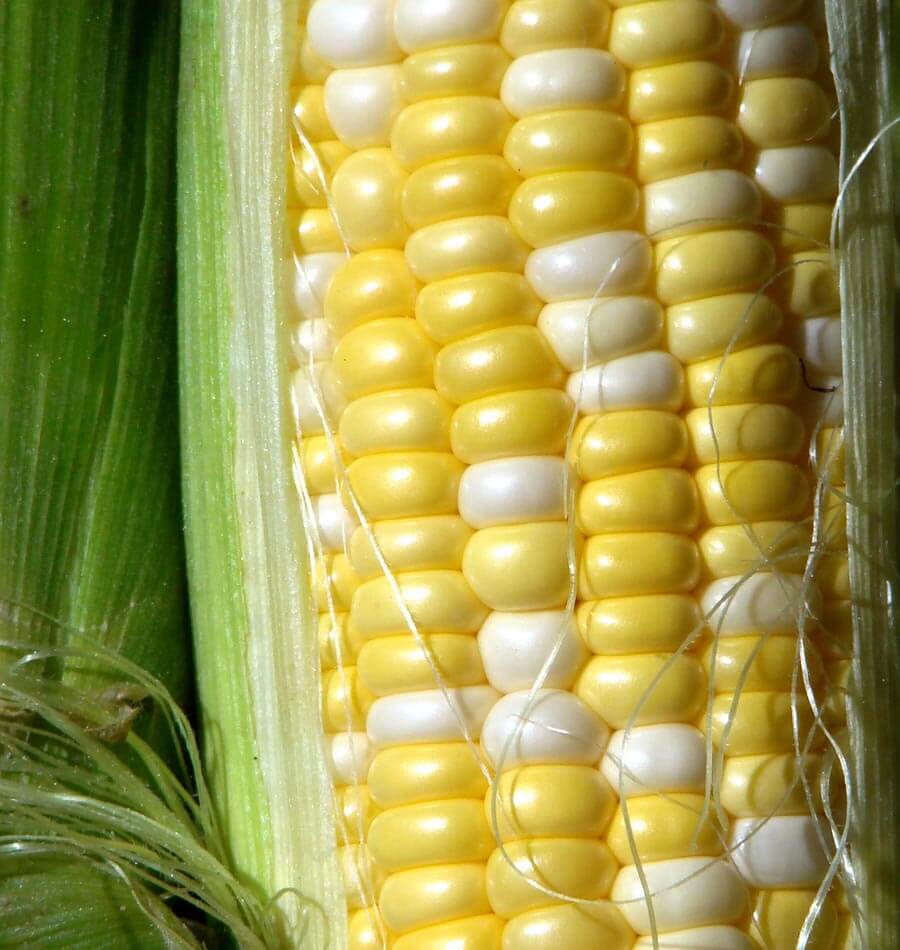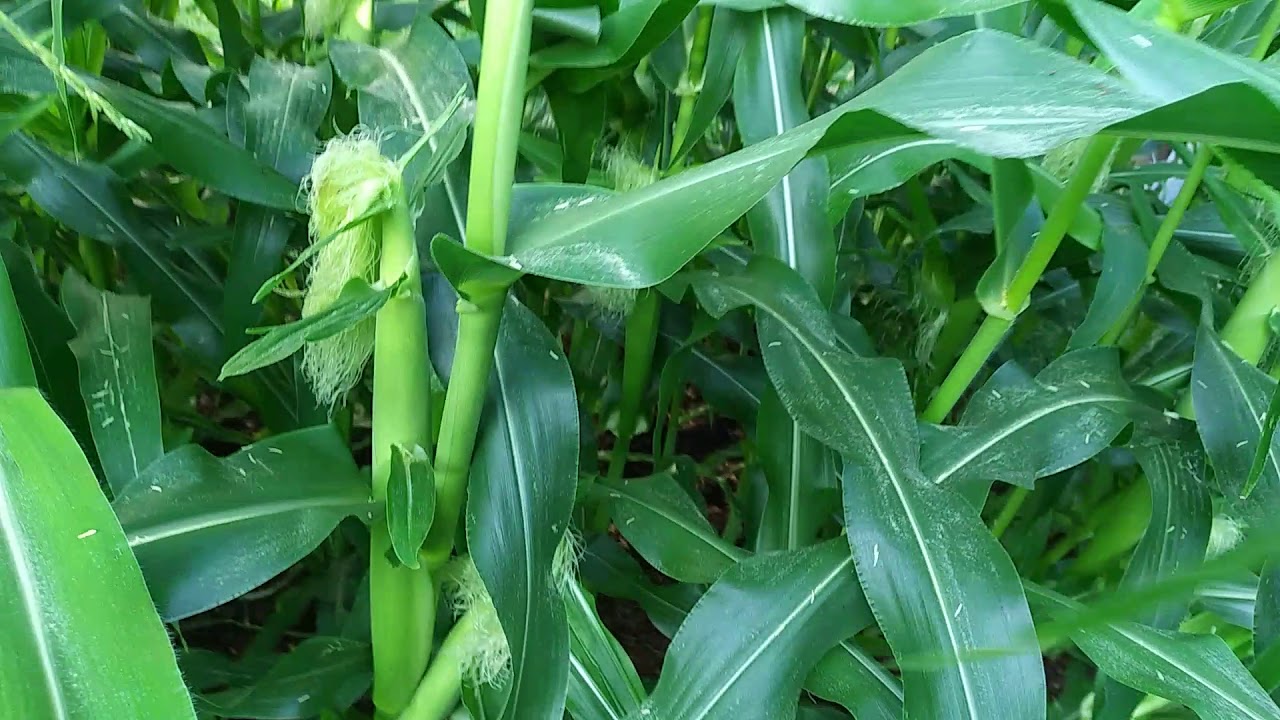To plant Peaches And Cream corn, choose a sunny spot with well-draining soil. Space seeds 8-12 inches apart, planting them 1-2 inches deep.

Credit: www.westcoastseeds.com
Water regularly and provide support for the stalks as they grow.
How to Plant Peaches And Cream Corn : Step by Step Guide
Selecting The Right Varieties
| Factors to consider when choosing peaches and cream corn varieties |
|---|
|
When selecting peaches and cream corn varieties, there are a few factors to keep in mind. Firstly, ensure that you choose varieties that are suitable for your climate and growing conditions. Different varieties thrive in different environments, so it’s essential to select ones that are well-suited to your region.
Secondly, consider the maturity time of the varieties. Some peaches and cream corn varieties mature early, while others take longer. Depending on your planting schedule and desired harvest time, you may want to choose varieties accordingly. Lastly, obtaining quality seeds is crucial for successful corn cultivation. Look for reputable seed suppliers or consider saving seeds from previous successful crops. Opt for seeds that are free from disease and choose heirloom or organic varieties whenever possible. Remember, by carefully selecting the right varieties and obtaining quality seeds, you can ensure a successful peaches and cream corn planting experience. |
Preparing The Soil
One of the crucial steps in planting peaches and cream corn is preparing the soil. To ensure optimal growth, certain soil requirements must be met. Firstly, choose a well-draining soil that retains moisture to support the corn’s needs. Loamy soils with a pH level between 6.0 and 6.8 are ideal. Begin by clearing the planting area of any weeds or debris. Loosen the soil using a garden fork or tiller, ensuring it is free from clumps. This promotes better root development and nutrient absorption. Incorporate organic matter, such as compost or aged manure, into the soil to improve its fertility and structure.
Additionally, it is essential to conduct a soil test to determine any deficiencies or imbalances. Based on the results, amend the soil with the necessary nutrients or minerals. Remember to follow the recommended planting depth and spacing instructions for peaches and cream corn, ensuring optimum air circulation. Providing the right soil conditions will enable your corn to flourish, yielding delicious, sweet ears.
Planting Peaches And Cream Corn
Planting Peaches and Cream Corn requires careful attention to various factors to ensure a successful growth. The best time to plant this variety of corn is during late spring, when the soil temperature consistently reaches around 50 to 55 degrees Fahrenheit.
When planting, it is important to follow correct techniques. Provide adequate spacing between the seeds and rows to allow sufficient room for growth. This typically involves planting the seeds about 8 to 12 inches apart, with rows spaced approximately 30 to 36 inches apart.
Proper planting depth and seed placement are crucial for successful germination. Plant the seeds at a depth of around 1 to 1.5 inches, ensuring that they are placed with the pointed end facing downward. This helps the roots to establish properly.
After planting, regular watering is essential to keep the soil moist. This aids in seed germination and initial growth. Maintain a consistent level of moisture in the soil without overwatering, as excessive water can lead to rot or fungal disease.
Providing Adequate Care
Providing adequate care is essential for successful growth of peaches and cream corn. Proper watering is crucial to ensure healthy development. It is recommended to water the plants regularly to maintain soil moisture. The frequency and amount of water required may vary depending on environmental conditions and stage of growth. As a general rule, corn plants need about 1 inch of water per week.
Various irrigation methods can be considered for peaches and cream corn. This includes using sprinklers, drip irrigation, or soaker hoses. It is important to choose a method that ensures water reaches the plant’s root zone.
In addition to sufficient water, proper fertilization practices are necessary for optimal growth. Choosing the right fertilizer that is high in nitrogen, phosphorus, and potassium can provide essential nutrients. The timing and method of fertilizer application should be followed as per instructions.
Weed control is another crucial aspect of caring for peaches and cream corn. Mulching around the plants can help prevent weed growth by suppressing weed seeds. Additionally, manual removal techniques can be used to eliminate any weeds that appear.
Protecting From Pests And Diseases
| Protecting from Pests and Diseases | |
| Common pests that affect peaches and cream corn | |
| Identification and prevention methods | Organic pest control options |
| Pests like corn earworms, aphids, and cutworms are common threats to peaches and cream corn. To identify them, closely watch leaves and stalks for signs of infestation and damage. Prevention methods include crop rotation, maintaining proper spacing, and applying organic pesticides. Regularly check plants for pest eggs and use sticky traps to catch adult pests. Removing weeds and providing adequate irrigation will also deter pests. | Organic pest control offers a safe and environmentally friendly alternative. Beneficial insects like ladybugs and lacewings can be introduced to the garden to prey on pests. Planting companion plants such as marigolds and garlic can act as natural repellents. Homemade sprays made from ingredients like neem oil and soap can be effective against pests. Regularly inspecting plants and applying organic insecticides when necessary can help control pest populations. |
| Common diseases that affect peaches and cream corn | |
| Recognizing symptoms and early detection | Effective disease management practices |
| Diseases like corn smut, common rust, and northern corn leaf blight can harm peaches and cream corn. Recognize symptoms such as discolored leaves, fungal growth, and irregular spots. Promptly remove and destroy infected plants to prevent further spread. Maintaining good airflow and avoiding excessive moisture can help reduce disease risks. | Effective disease management involves practicing good sanitation, including crop rotation and removal of plant debris. Use disease-resistant corn varieties whenever possible and avoid over-fertilization. Applying fungicides or organic treatments like copper-based solutions can help control disease outbreaks. Regular monitoring and early intervention are key to managing and preventing diseases in peaches and cream corn. |
Harvesting And Storing
When planting peaches and cream corn, it is important to know the signs that indicate when the corn is ready for harvest. Look for several indications, such as the silk turning brown and dry, the ears feeling full and plump, and the kernels being milky and tender. **Proper harvesting techniques** include gripping the ear firmly and twisting it downward to detach it from the stalk. Avoid pulling or tearing the ears, as this can damage the plant.
After harvesting, it is essential to store the peaches and cream corn properly to maintain its freshness. **Storing peaches and cream corn for freshness** involves removing the husks and placing the ears in a plastic bag before refrigerating them. This will help to preserve the flavor and texture of the corn for a longer time. Remember to consume the corn within a few days to enjoy its optimal taste and quality.
Common Mistakes To Avoid
Succesfully planting and growing peaches and cream corn requires attention to detail and avoiding common mistakes. One major pitfall to avoid is over- or under-watering. Be sure to maintain a proper balance, providing enough water for the plants without drowning them. Another mistake to steer clear of is poor soil preparation and fertilization.
Take the time to properly prepare the soil by removing any weeds or debris and adding organic matter or compost for nutrients. Additionally, regular fertilization throughout the growing season will help support healthy plant growth and yield. Finally, don’t overlook the importance of pest and disease management. Stay vigilant in monitoring for any signs of pests or diseases, and take immediate action to prevent their spread. By avoiding these common pitfalls, you can set yourself up for a successful crop of peaches and cream corn.
Enjoying The Fruits Of Your Labor
Planting peaches and cream corn is a delightful experience that allows you to enjoy the fruits of your labor. To maximize the taste and sweetness of your corn, follow these tips:
- Choose a sunny location with well-drained soil.
- Plant the corn seeds at the depth and spacing recommended on the seed packet.
- Water the plants regularly, aiming for about an inch of water per week.
- Apply organic mulch to help retain moisture and control weeds.
- Harvest the corn when the ears are fully mature and the silk turns brown.
Once you have harvested your peaches and cream corn, you can explore delicious recipes that showcase its sweet and creamy flavor:
| Recipe | Description |
|---|---|
| Corn Chowder | A comforting soup made with fresh corn kernels, potatoes, and onions. |
| Grilled Corn Salad | A refreshing salad with grilled corn, tomatoes, avocado, and cilantro. |
| Corn Fritters | Crunchy fritters made with corn, flour, and spices, perfect as an appetizer or side dish. |
Don’t forget to share the bounty of your peaches and cream corn with others. Whether you give some to friends and neighbors or donate to a local food pantry, spreading the sweetness brings joy to everyone.
Frequently Asked Questions For How To Plant Peaches And Cream Corn
How Long Does It Take For Peaches And Cream Sweet Corn To Mature?
Peaches and cream sweet corn takes about 77 to 85 days to mature.
How Far Apart Do You Plant Peaches And Cream Corn Rows?
Plant peaches and cream corn rows approximately 12-18 inches apart for optimal growth and yield.
How Long Does It Take For Peaches And Cream Corn Seeds To Germinate?
Peaches and cream corn seeds typically take around 7 to 10 days to germinate.
How Many Ears Of Corn Are In A Stalk Of Peaches And Cream?
A stalk of peaches and cream corn typically has multiple ears of corn.
Conclusion
To sum it up, planting Peaches and Cream corn requires careful consideration and attention to detail. By following the steps outlined in this blog post, you can ensure a successful crop that will delight your taste buds. Start by selecting a suitable location for your corn, providing it with plenty of sunlight and well-drained soil.
Prepare the soil properly by adding organic matter and fertilizers. When it comes time to sow the seeds, plant them at the right depth and spacing. Regularly water and weed the corn to promote healthy growth. Finally, harvest the corn when the silks are dry and the kernels are plump.
By following these guidelines, you’ll be able to enjoy the sweet and creamy goodness of Peaches and Cream corn right from your own backyard. Happy gardening!

